Best Plants for Terrariums: Top Choices for Your Mini Ecosystem
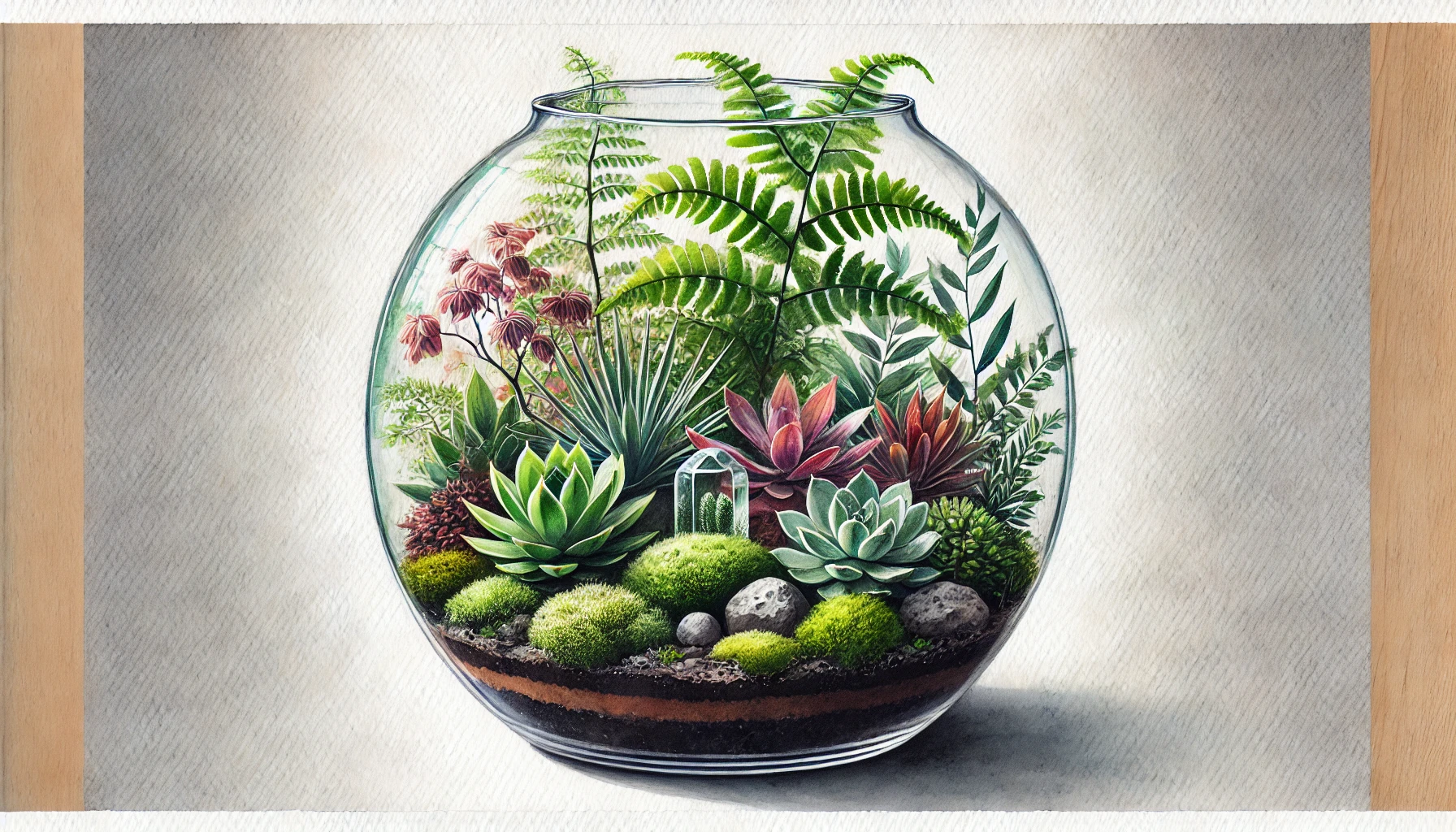
Terrariums are essentially miniature indoor gardens housed in glass containers, designed to replicate the environmental conditions where plants can grow. They offer a low-maintenance, aesthetically pleasing way to bring a piece of nature into your home. You can create a self-sustaining ecosystem within the glass walls, allowing you to enjoy plants without the challenges of outdoor gardening. Terrariums come in two main types: open and closed.
- Open Terrariums are best suited for plants that require dry conditions and good airflow, such as succulents and cacti. The open nature allows air to circulate, preventing excess moisture buildup.
- Closed Terrariums create a sealed, humid environment that mimics tropical forests. The moisture retained within the container keeps humidity-loving plants such as ferns, mosses, and tropical varieties happy and healthy.
Regardless of the terrarium type, the key is to choose plants that can thrive in these specific conditions—be it a dry, airy open terrarium or a humid, closed one.
Best Plants for Terrariums
When selecting plants for your terrarium, it’s important to consider the specific requirements of each species, including size, light exposure, and humidity preferences. Below are some of the top plant choices, each offering unique beauty and characteristics suited to a variety of terrarium styles.
1. Fittonia (Nerve Plant)

Fittonia, also known as the nerve plant, is popular for its colorful foliage. Its leaves feature intricate vein patterns, typically in white, red, or pink, set against a green background. It grows in compact clusters, making it ideal for small, closed terrariums. Fittonia thrives in environments with high humidity and indirect light, and it can tolerate low light, making it a versatile choice for various indoor settings. However, it needs consistent moisture, so it’s better suited to a closed terrarium where humidity is retained. Be cautious not to let it dry out completely.
2. Asparagus Fern (Asparagus Setaceus)
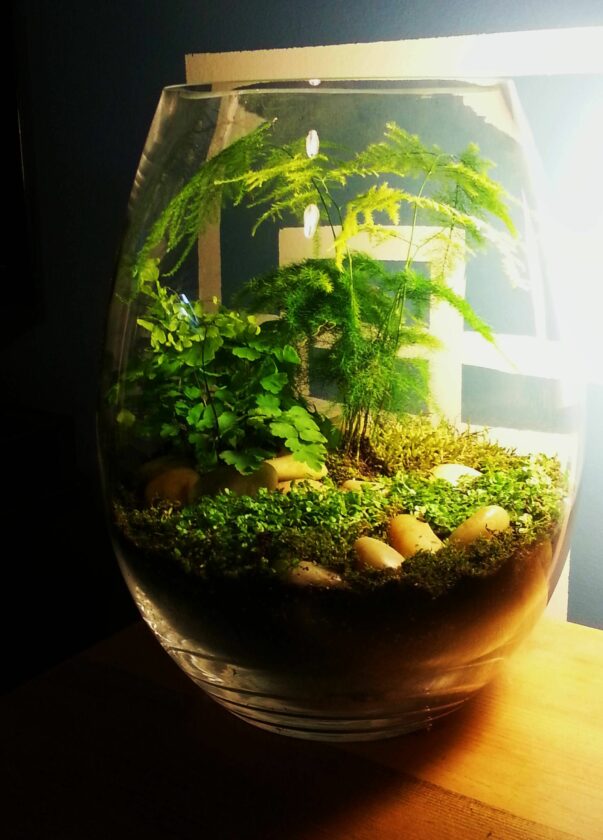
The asparagus fern, despite its name, is not a true fern but offers a similar delicate appearance. Its feathery foliage creates a lush, textured background in terrariums. This plant thrives in both open and closed terrariums, provided there’s enough humidity. In low-humidity environments, such as open terrariums, it may need more frequent misting. Asparagus fern prefers indirect light, making it an adaptable option for different indoor light conditions. It’s hardy and fairly forgiving if its needs are met.
3. Maidenhair Fern (Adiantum)
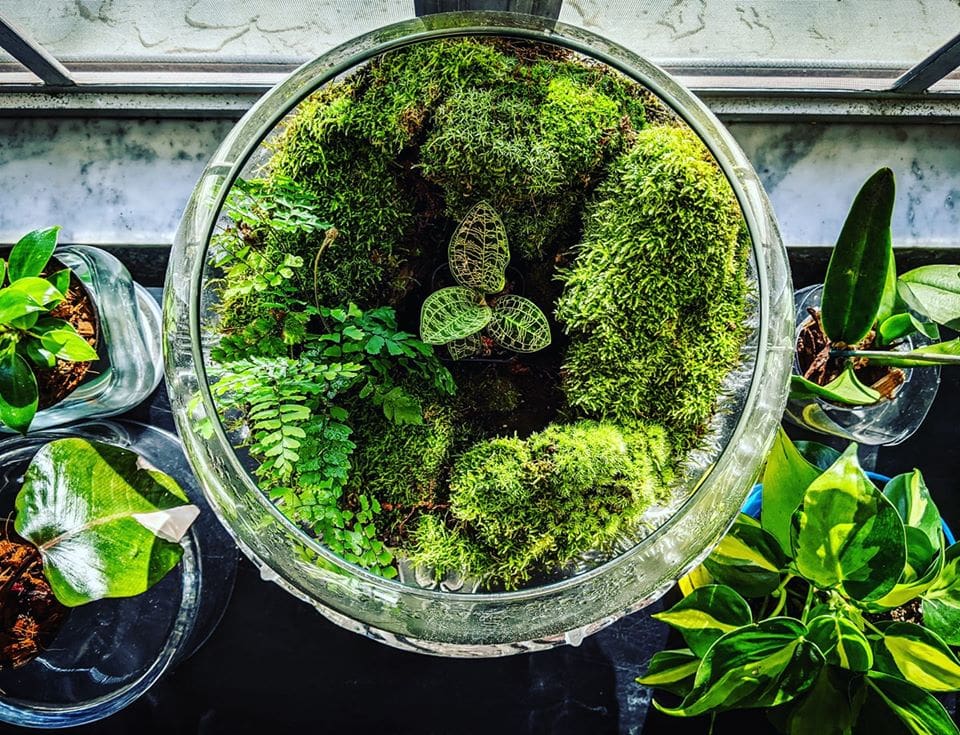
Known for its delicate and elegant fronds, the maidenhair fern is a beautiful addition to any terrarium, particularly closed ones. This fern enjoys high humidity and moist soil, making it an ideal fit for terrariums that retain moisture. It’s a bit more finicky than other plants, requiring consistent moisture and indirect light to thrive. Its soft, feathery leaves are stunning but prone to drying out if not maintained carefully. Regular misting and ensuring a humid environment will keep this fern looking its best.
4. Selaginella Kraussiana (Club Moss)
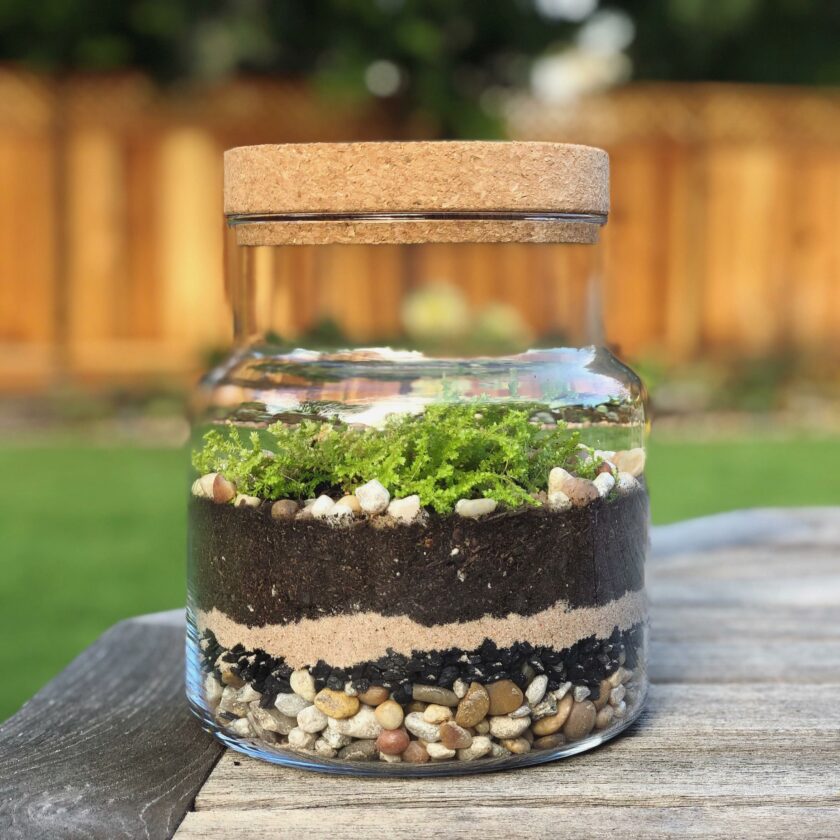
Selaginella, also known as club moss, has a moss-like appearance with dense, bright green foliage that spreads across the surface of the terrarium. It thrives in low light and high humidity, making it perfect for closed terrariums. This plant is ideal for filling gaps between larger plants, creating a lush, green carpet that contrasts beautifully with other foliage. It’s an easy-care plant that requires minimal effort to maintain, as long as it’s kept moist and out of direct sunlight.
5. Peperomia Prostrata (String of Turtles)

Peperomia prostrata, or string of turtles, is a small, trailing plant with round, patterned leaves that resemble turtle shells. It’s a charming choice for open terrariums, where it can trail along the sides of the container. Peperomia prostrata prefers bright, indirect light and moderate watering, making it relatively easy to care for. It’s important not to overwater this plant, as it prefers its soil to dry out slightly between waterings. Its slow-growing nature makes it a great long-term addition to terrariums without overwhelming the space.
6. Lithops (Living Stones)

Lithops, commonly known as living stones, are small succulents that mimic the appearance of stones or pebbles. They are a unique choice for dry, open terrariums that receive plenty of sunlight. These drought-tolerant plants store water in their thick leaves, making them perfect for low-maintenance terrariums. Lithops require very little water, as overwatering can cause them to rot. They thrive in bright, direct sunlight, making them ideal for open terrariums placed in well-lit areas.
7. Prayer Plant (Maranta Leuconeura)
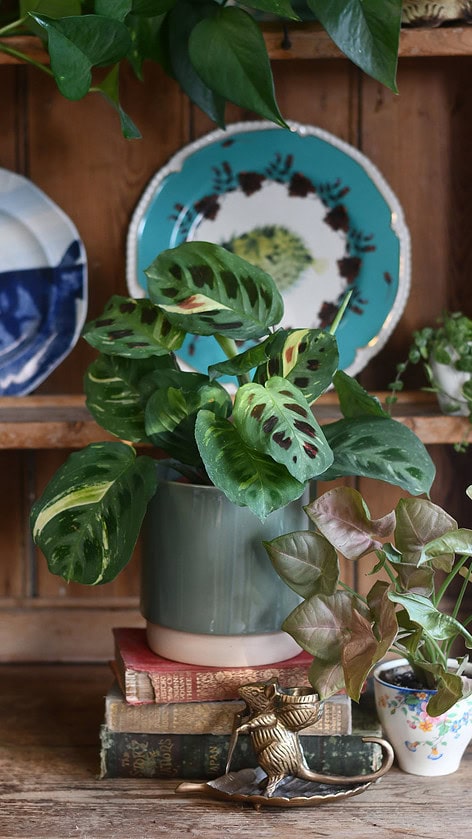
The prayer plant gets its name from the way its leaves fold up at night, as though in prayer. With its striking green and red-veined leaves, it adds color and texture to any terrarium. The prayer plant loves humid conditions, making it a great fit for closed terrariums where moisture can be retained. It prefers indirect light and needs consistent watering to keep its soil moist but not soggy. This plant is an eye-catching addition to any terrarium, with the added bonus of its daily leaf movement creating dynamic interest.
8. Aquatic Mosses (Java Moss)
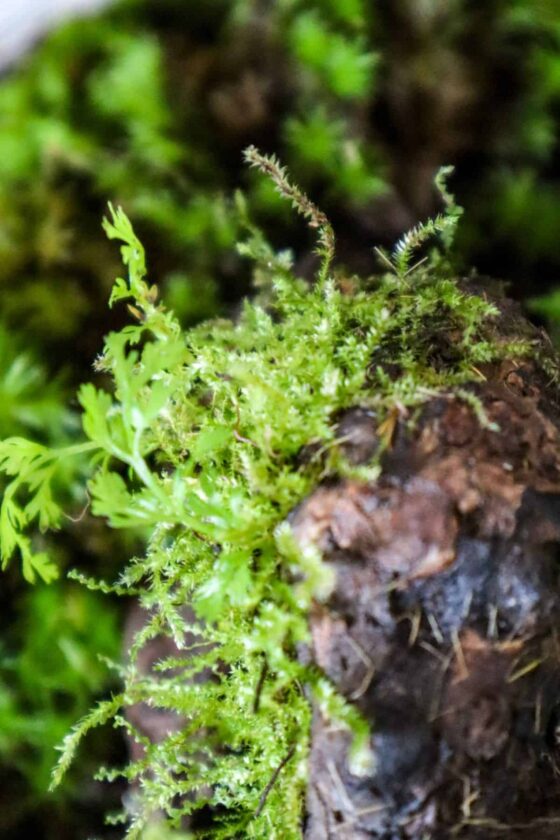
Aquatic mosses like Java moss are perfect for terrariums that incorporate water elements, such as paludariums. Java moss can grow fully submerged in water or partially out of it, making it versatile for both semi-aquatic and purely aquatic setups. It thrives in humid environments and is low-maintenance, requiring only minimal care. Java moss doesn’t need direct sunlight and can thrive in shaded conditions, adding a natural, lush look to any water-based terrarium.
9. Succulents and Cacti

For those who prefer a dry, open terrarium, succulents and cacti are the ideal plants. They are low-maintenance, drought-tolerant, and come in a wide variety of shapes and sizes, allowing for creative arrangements. Some popular succulent choices for terrariums include Echeveria, Haworthia, and jade plants. Cacti are also great additions but should be paired with plants that have similar low-water needs. It’s essential to avoid overwatering succulents and cacti, as excess moisture can lead to root rot.
How to Layer Your Terrarium for Success
Creating a thriving terrarium begins with proper layering to ensure adequate drainage, airflow, and soil health. Here’s how to layer your terrarium for the best results:
- Base Layer of Stones or Gravel
This bottom layer acts as a drainage system to prevent water from pooling at the roots of your plants, which can lead to rot. The stones allow excess water to filter down and away from the roots. - Activated Charcoal Layer
Activated charcoal helps keep the terrarium environment clean by filtering toxins and preventing odors. It’s especially important in closed terrariums, where airflow is limited. - Substrate (Soil Mix)
The top layer is the soil in which your plants will grow. For most terrariums, a mix of potting soil, sand, and peat moss will provide the right balance of nutrients, drainage, and moisture retention. The soil should be appropriate for the plants you choose—succulents need a fast-draining mix, while tropical plants thrive in more moisture-retentive substrates. - Decorative Elements (Optional)
You can add decorative rocks, figurines, or moss to enhance the visual appeal of your terrarium, but be careful not to overcrowd the space, as your plants need room to grow.
Caring for Terrarium Plants
Once your terrarium is set up, proper maintenance is essential to ensure the health of your plants. Here are some basic care tips:
- Watering:
Closed terrariums rarely need watering since the water is recycled within the container. Be sure to check for signs of overwatering, such as condensation on the glass or mold. Open terrariums, on the other hand, will need more frequent watering, especially if they contain succulents or cacti. - Light Exposure:
Most terrarium plants prefer indirect light, as direct sunlight can overheat closed terrariums or dry out open ones. Placing your terrarium near a bright window with filtered light is ideal. - Humidity Control:
Closed terrariums naturally maintain higher humidity levels, making them perfect for tropical plants. However, if you notice excess moisture, you may need to occasionally open the terrarium to let some air in. - Pruning:
Regularly trim back any overgrown plants to keep your terrarium looking neat and prevent crowding. This also encourages healthier growth.
Plants to Avoid in Terrariums
While many plants are suitable for terrariums, there are some that don’t do well in these conditions, especially for beginners:
- Carnivorous Plants:
While interesting, carnivorous plants have very specific needs and may struggle in traditional terrarium setups unless designed specifically for them. - Succulents in Closed Terrariums:
Succulents and cacti thrive in dry environments and can suffer from root rot in the high-humidity conditions of closed terrariums. - Plants Sensitive to Airflow: Plants that require good air circulation, such as certain orchids, may struggle in the stagnant air of a closed terrarium.
Conclusion
Choosing the right plants for your terrarium is crucial for creating a beautiful, low-maintenance mini-ecosystem. By selecting plants suited to the specific conditions of your terrarium—whether it’s an open, dry container or a closed, humid one—you can enjoy a thriving, self-contained garden. Be mindful of each plant’s light, water, and humidity needs, and your terrarium will flourish for years to come.
No posts